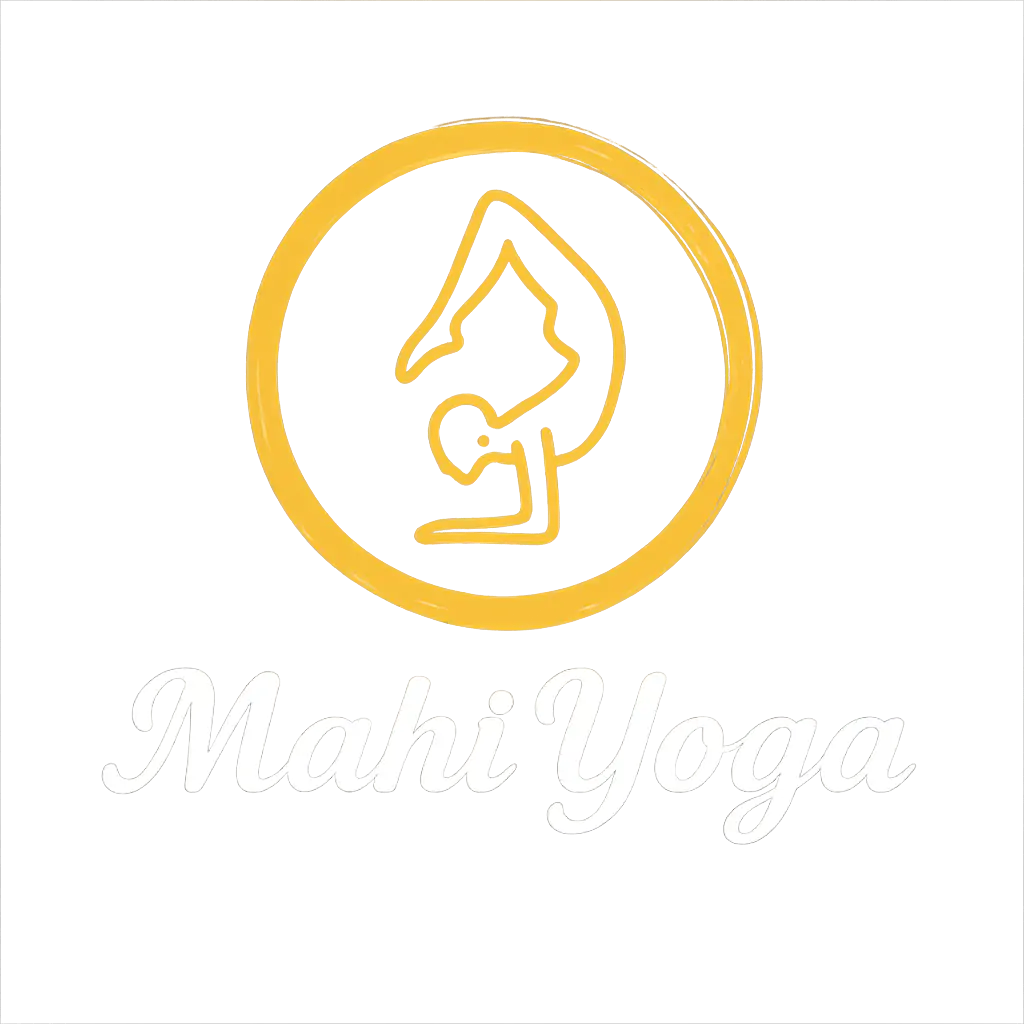Yoga is a great way to improve your flexibility. It can help you to stretch your muscles and joints, which can improve your range of motion. This can lead to a number of benefits, such as:
- Reduce pain and stiffness
- Improved posture
- Increased range of motion
- Better balance and coordination
- Reduced stress and anxiety
- Improved sleep
If you are looking to improve your flexibility, yoga is a great place to start. There are many different yoga poses that can help to stretch different areas of the body. Here are a few of the best poses for improving flexibility:
- Standing Forward Bend (Uttanasana): Uttanasana or Standing Forward Bend is a standing forward bend posture in modern yoga as an exercise.
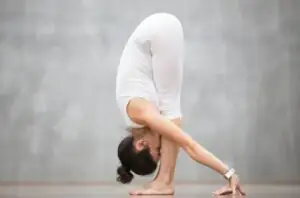
How to do it:
- Stand with your feet hip-width apart.
- Bend forward from the hips, keeping your back straight.
- Reach down towards your toes, or as far as you can comfortably go.
- Hold for 30 seconds.
Benefit :
- Stretches the hamstrings, calves, and back.
- Improves posture.
- Relieves stress and anxiety.
- Calms the mind.
2. Child’s Pose (Balasana): Balasana or Child’s Pose is a kneeling posture as an exercise in modern yoga.
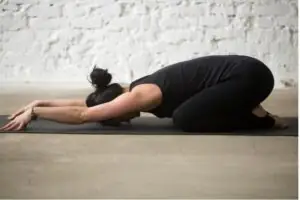
How to do it:
- Kneel on the floor with your knees hip-width apart and your toes touching.
- Sit back on your heels and separate your knees slightly wider than your hips.
- Exhale and fold forward, resting your forehead on the floor between your knees.
- Extend your arms out in front of you, palms down, or rest them alongside your body with your palms facing up.
- Relax your shoulders, neck, and jaw.
- Breathe deeply and evenly for 5-10 breaths.
Benefit:
- Child’s pose is a gentle and restorative pose that can help to relieve stress, tension, and anxiety.
- It also helps to stretch the hamstrings, calves, back, shoulders, and neck.
- Child’s pose can be used as a transition pose between other yoga poses, or as a resting pose during a yoga practice.
3. Downward-Facing Dog (Adho Mukha Svanasana): This pose is a great way to stretch the hamstrings, calves, and back.
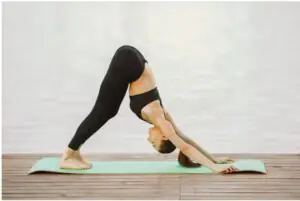
How to do it:
- Start on your hands and knees with your wrists under your shoulders and your knees under your hips.
- Curl your toes under and push back through your hands to lift your hips and straighten your legs.
- Spread your fingers wide, press down through your knuckles, and keep your head hanging down.
- Engage your core muscles to keep your back straight and your spine long.
- Hold for 5-10 breaths.
Benefit:
- Stretches the hamstrings, calves, shoulders, and back.
- Improves posture.
- Strengthens the core muscles.
- Improves circulation.
- Relieves stress and anxiety.
4. Triangle Pose (Trikonasana): This pose stretches the sides of the body, including the hips, thighs, and shoulders.
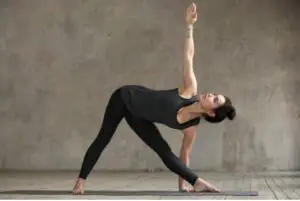
How to do it:
- Stand with your feet hip-width apart.
- Turn your right foot out 90 degrees and your left foot in 45 degrees.
- Extend your arms out to the sides at shoulder height, palms facing down.
- Inhale and bend forward from your hips, reaching your right hand down towards your right foot.
- Place your right hand on your ankle, shin, or the floor outside of your right foot.
- Turn your head to look up at your left hand.
- Keep your left arm reaching up towards the ceiling.
- Engage your core muscles and lengthen your spine.
- Hold for 5-10 breaths.
- Repeat on the other side.
Benefits:
- Stretches the hamstrings, calves, hips, and shoulders.
- Improves balance and coordination.
- Strengthens the core muscles.
- Opens the chest and lungs.
- Relieves stress and anxiety.
- Improves digestion.
- Reduces back pain.
- Helps to improve sleep quality.
5. Pigeon Pose (Kapotasana): This pose stretches the hips, groin, and inner thighs.
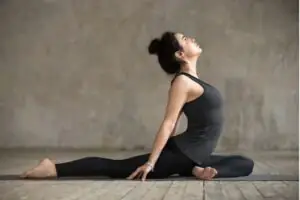
How to do it :
- Start on your hands and knees.
- Bring your right knee forward, in line with your right wrist.
- Slide your left leg back and extend it straight behind you.
- Flex your right foot and press down through your heel.
- Rotate your right thigh outward so that your shin is parallel to the front of your mat.
- Lower your hips down towards the floor, resting your weight on your right knee and foot.
- Lengthen your spine and extend your arms out in front of you, palms down.
- Hold for 5-10 breaths.
- Repeat on the other side.
Benefit:
- Stretches the hips, groin, and inner thighs.
- Opens the chest and shoulders.
- Improves flexibility and range of motion.
- Relieves tension and stress.
- Helps to improve digestion.
- May help to reduce menstrual cramps.
Warnings:
- If you have any injuries, be sure to talk to yoga instructor before trying any new yoga poses.
- Listen to your body and don’t push yourself too hard. If a pose is causing pain, stop and come out of it.
- Be patient. It takes time and practice to improve your flexibility.
Mahi Yoga is a highly regarded yoga school in Dharamsala, India. Mahi Yoga’s Yoga Instructor Training programs are designed to cater to practitioners of all levels, from beginners to advanced students. The courses cover a wide range of subjects, including asanas (yoga postures), pranayama (breathing techniques), meditation, yogic philosophy, anatomy, teaching methodology, and more. Students receive comprehensive theoretical and practical training, allowing them to develop a deep understanding of yoga and its applications.
